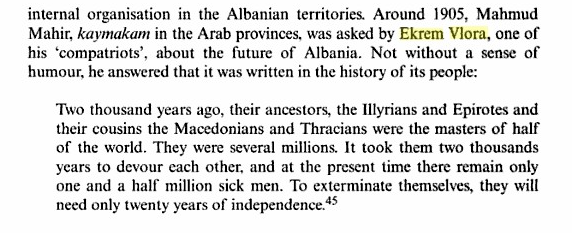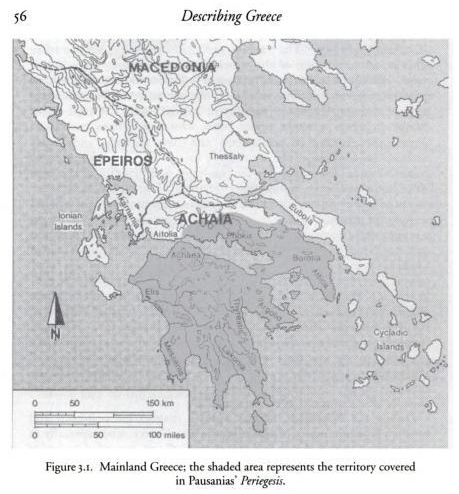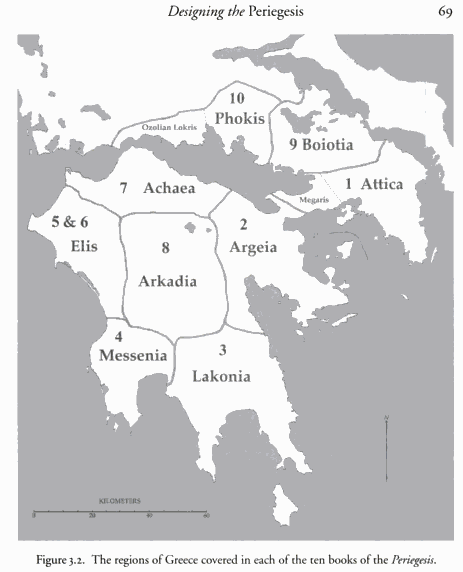This section is from "The American Cyclopaedia",
by George Ripley And Charles A. Dana. Also available from Amazon:
The New American Cyclopædia. 16 volumes complete..
Albania
Albania (called by the natives Shkiperia, and by the Turks Arnautlik), a province of European Turkey, between lat. 39° and 43° N. and lon. 19° and 21° 30' E., extending for about 290 miles along the Adriatic and Ionian seas, and having a breadth in the centre and parts of the north of upward of 100 miles, and in the south, near the gulf of Arta, of not more than 40 miles. It is bounded on the N. by Montenegro and Bosnia, on the E. by Turkish Servia, Macedonia, and Thessaly, and on the S. by the modern kingdom of Greece. Pop. estimated at 2,000,000. Albania embraces ancient Epirus, Illyris Graeca, and the adjoining parts of ancient Dalmatia. The ridge of mountains anciently chiefly known as the Scardus and the Pindus forms its ill-defined northern and eastern boundary. The general character of the country is rugged and mountainous. Nine ranges of hills intersect it from N. E. to S. W., with elevations of from 4,000 to 8,000 feet above the sea, and covered with snow three fourths of the year.
The rivers are inconsiderable, and many of them during the summer are quite or nearly dry; the most important are the Drin and the Voyutza. There are several lakes, among them those of Scutari, Ochrida, and Janina. In the mountains and forests there are bears, wolves, wild hogs, and deer; sheep, goats, and cows are tended in the valleys; and there is an excellent breed of horses. Eagles and various kinds of birds are plentiful, and hawking is the favorite amusement of the wealthy classes. The varied vegetation exhibits many forms similar to those of the Swiss Alps and the mountains of Scotland. The exports of Albania consist of oil, wool, maize, tobacco, horses, sheep, goats, timber, and some embroidered velvets and cloths. Merchandise is carried inland by means of pack horses, four or five of which i are attached together by cords and guided by one man. The vigorous administration of Ali Pasha, by building roads and suppressing gangs of robbers, added much to the facility of internal traffic. - Lower or southern Albania constitutes the eyalet of Janina, and upper Albania comprises the greater part of the divisions of Prisrend, Monastir, and Scutari. Among the most remarkable tribes is that of the Mirdites in the north, whose territory has never been invaded by the Turks, and who acknowledge no subjection to the Porte, except in supplying a contingent to the army in case of war.
The Albanians are muscular, active, and erect. The women are tall and strong, with an air indicating ill treatment and laborious work. The dress of the people is fantastic and complicated. The wealthy Albanian wears over a close-iit-ting vest, buttoned to the throat, an open jacket, with open sleeves, richly embroidered. A frilled skirt falls to his knees from a broad girdle, in which are stuck his silver-mounted pistols, on the ornamentation of which he spends extravagant sums, and his yataghan. Cloth leggings, likewise embroidered, cover the legs, and he wears the fez. A peculiar garment, assumed when travelling, is the capote, a cloak of i wool or horse-hair. The Albanians are a nation of warriors, early trained to discipline, and constituting the best soldiers in the Turkish army. Their national name is Shkipetars; the Turks call them Arnauts. Wallachs and Greeks live scattered among them. A rude kind of Mohammedanism has gradually supplanted the Christianity of the country. - Though Albania has several times changed its name, its masters, and its boundaries, a people cherishing unchanged their nationality, language, and manners have from the earliest records of history occupied its mountains.
First, the fierce tribes of Epirus and the still more savage Illyrians had possession of the country, and withstood alike the efforts of the Greeks and of the Romans to civilize them. On the conquest of Constantinople by the Latins in 1204, one of the imperial family of Comnenus succeeded in establishing a dynasty in this district, and the despots of Albania continued for two centuries only second in power to the emperors of Constantinople. Mohammed II., having conquered Constantinople, marched against the Albanians, only to experience a succession of defeats. The heroism of George Castriota, commonly known in history as Scanderbeg or Iskander, their last independent prince, resisted for more than 20 years the whole force of the Ottoman empire, and it was not till his death in 1467 that Albania was annexed to the Turkish dominions. Albania was di-vided into several distinct pashalics till the close of last century, when Ali Pasha, having married the daughter of the principal chief, succeeded in establishing himself as an independent sovereign over all its territory, and a wide extent beyond.
After his overthrow, and during the insurrection of the Greeks, the Albanians were inclined to make common cause with the latter; but their attempts to cooperate in the war produced only their massacre and harsh treatment by the Greeks, and they were therefore thrown into the arms of the Porte, to which they have since continued nominally subject. - The Albanian language belongs to the Indo-European family of languages, and is spoken in different dialects in the north and south. The original stock of words is believed to have been derived from the ancient Illyrians, but it is mixed up with Greek, Latin, Turkish, Italian, French, and Slavic. Many of the Albanians, particularly the Toskaris in the south, speak the modern Greek, and in that part of the country the Albanian proper is also more mixed with Greek than the Geg dialect in the north. Xylander and Bopp have written on the Albanian language. The work of the latter, Ueber das Albanesische, was published in Berlin in 1855. Both the Latin and Greek alphabets are used in Albanian books. Latin letters have been adopted in the translation of the New Testament (Constantinople, 1866), and in versions from the gospel of St. Matthew by Prince Louis Lucien Bonaparte, with occasional Greek letters, and in other contemporary works.
Greek letters have been used by Anas-tasio Kulurioti (Athens, 1866), by Salterio (Constantinople, 1868), and in the Alfabeto generale Aloano-Epirotico (Leghorn, 1869), which last is also contained in A Dora d'Istria gli Albanesi (Leghorn, 1870). An Albanian grammar has been lately published at Leghorn (Grammatologia Albanese). Prince Louis Lucien Bonaparte's version of the parable of the sower in Matthew has been published under his auspices in the Siculo-Albanese, the Ca-lapro-Albanese, and the Scutari-Albanese dialects (London, 1868-70). Albanian literature consists chiefly of popular songs and fairy tales. The late Austrian consul at Syra, Mr. de Hahm, is a high authority on the subject in his Alba-nesische Studien (Jena, 1854), and Griechisch-Albanesische Marchen (2 vols., Leipsic, 1864). Dora d'Istria, the author of the "Mussulman and Roumanian Albanians," has in other recent publications thrown much light upon the Albanian language and poetry.























